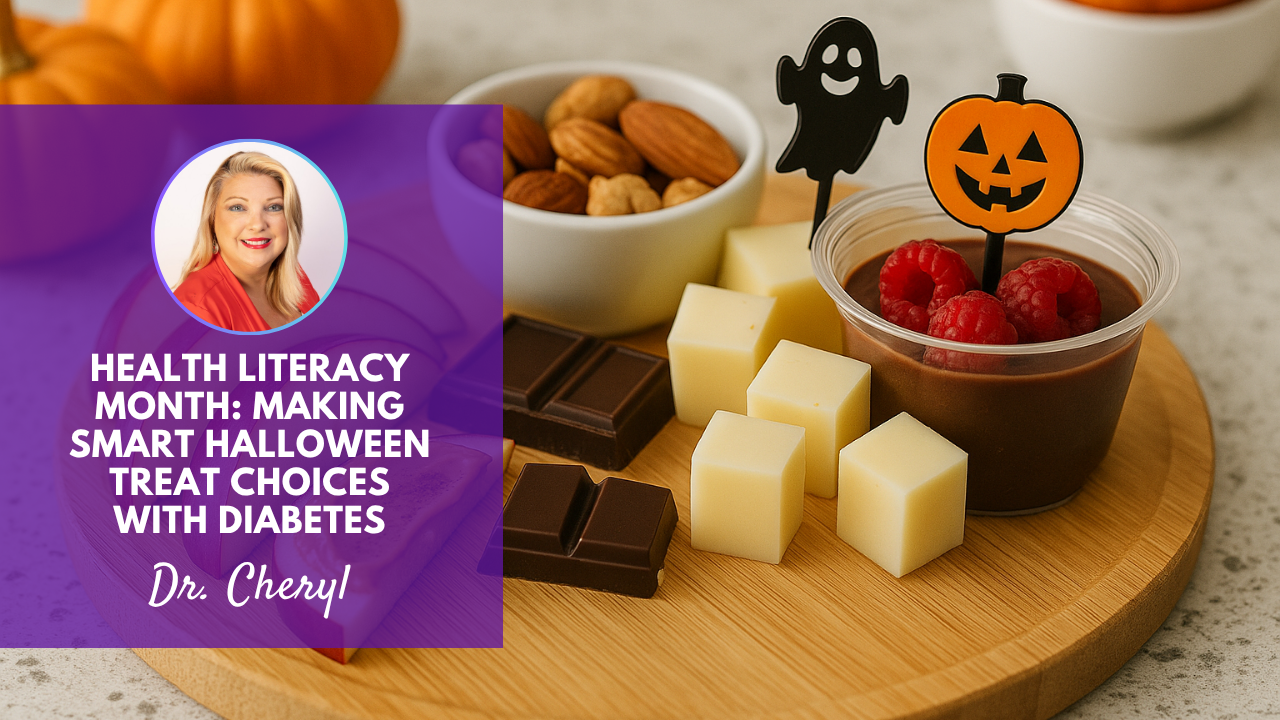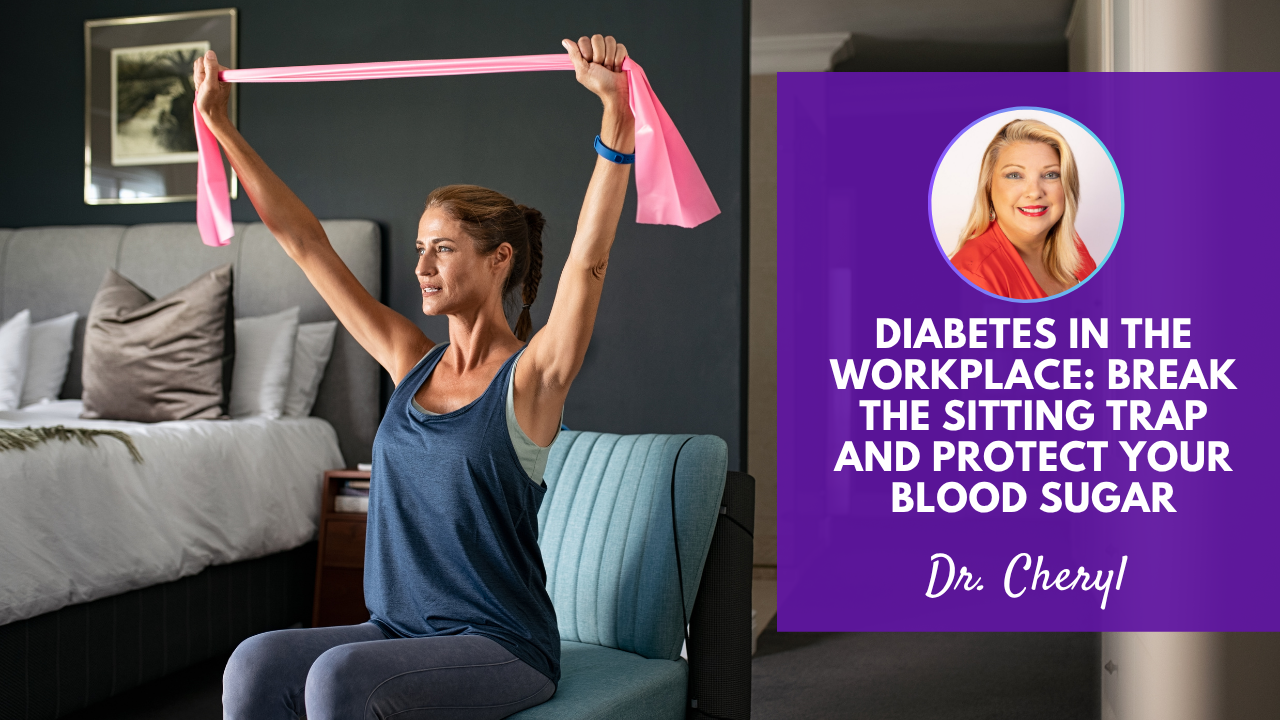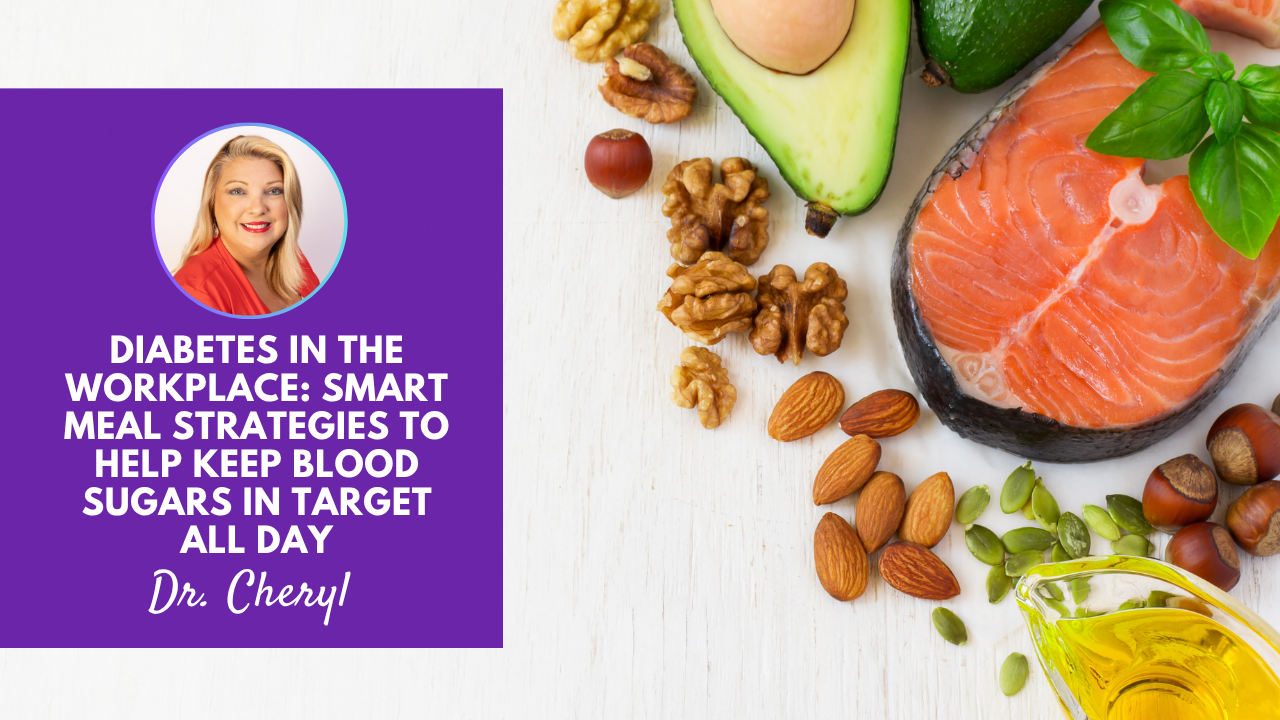
Health Literacy Month: Making Smart Halloween Treat Choices with Diabetes
October is Health Literacy Month, which reminds us that the ability to understand and apply health information is one of the most powerful tools we have. This week we are focusing on meals, with a timely twist: Halloween treats. For many people with diabetes, Halloween can feel like a holiday of temptation and frustration. Candy bowls at work, trick-or-treating with grandchildren, and shelves lined with sweets all create situations where it feels hard to stay on track.
Health literacy changes the way you approach these moments. It is not about avoiding every piece of candy or feeling guilty if you enjoy a treat. Instead, it is about understanding what sugar and portion sizes mean for your blood sugar, recognizing better alternatives, and creating strategies that work for your lifestyle. When you combine knowledge with awareness, you can make Halloween a holiday of enjoyment rather than anxiety.
Why Health Literacy Matters During Sugar-Heavy Holidays
Holidays often bring food-centered traditions, and Halloween is one of the most sugar-filled. Health literacy helps you look beyond the colorful wrappers and understand what those nutrition labels really mean. By learning how different types of sugar affect blood sugar levels, you can make smarter choices without feeling deprived.
Instead of seeing Halloween candy as off-limits, you can use it as a chance to practice reading labels, comparing portion sizes, and deciding what fits into your day. These skills carry far beyond one holiday. They help you feel prepared whenever unexpected sweets or snacks show up in your life.
How to Decode Labels on Halloween Candy
A quick glance at the front of the package will not tell you the whole story. Health literacy helps you flip the package over and look at the numbers that matter most. Pay attention to:
- Serving size: Sometimes a small-looking package actually contains two or more servings.
- Added sugars: This tells you how much of the sugar comes directly from sweeteners rather than natural sources.
- Total carbohydrates: This number is the most direct indicator of how the treat will affect your blood sugar.
When you understand these numbers, you can make decisions that feel intentional instead of impulsive.
Simple Diabetes-Friendly Halloween “Treat” Ideas
You do not need to give up the fun of Halloween to care for your health. With a little creativity, you can enjoy festive snacks without the blood sugar spike. Some ideas include:
- Small squares of dark chocolate paired with nuts.
- Apple slices dipped in a thin layer of nut butter and sprinkled with cinnamon.
- Sugar-free pudding cups decorated with a few berries for color.
- Cheese cubes with Halloween-themed toothpicks for a fun twist.
These options provide flavor and festivity while keeping your blood sugar more balanced.
Explore More on Smart Snacking for Energy and Balance
If you would like more ideas for everyday food choices, visit our blog Fuel Your Day: The Smart Snack That Keeps You Energized and Balanced. It explains how one simple, nutrient-rich snack can steady your blood sugar, boost your energy, and make your day flow more smoothly. Together with mindful Halloween treat strategies, it shows how small choices can add up to lasting confidence in your meals.
Frequently Asked Questions
What candy is safest for people with diabetes at Halloween?
Small portions of dark chocolate, sugar-free candies, or individually wrapped mini sizes are better choices. They still contain carbohydrates, but they are easier to control than larger servings.
How does portion size affect blood sugar with sweets?
Portion size is one of the most important factors. Even a healthier choice can raise blood sugar if eaten in large amounts. Smaller servings give you enjoyment without the same blood sugar impact.
Can sugar-free treats still affect blood sugar?
Yes. Some sugar-free candies use sugar alcohols, which may still raise blood sugar in certain people and can sometimes cause stomach upset if eaten in large amounts. They can also interfere with the balance of your microbiome,
Build Clarity and Confidence in Your Diabetes Journey
Health literacy is about more than reading numbers. It is about using information to create meals and make choices that support both your blood sugar and your lifestyle. This Halloween, let your awareness be your guide so you can enjoy the season without fear or guilt.
As you continue building your health literacy this month, remember that confidence comes from knowledge and practice. Small steps like reading labels, choosing better alternatives, and planning ahead add up to big results.
When you are ready to go deeper, book a complimentary Diabetes Wellness Connection Call today. It is an opportunity to talk through your goals, discuss challenges, and create a personalized plan that helps you thrive with confidence.
ABOUT THE AUTHOR

Dr. Cheryl
Dr. Ac., C.H., RDH
Dr. Holistic Studies, Dr. Acupuncture
Diabetes Wellness Strategist & Coach
Creator & CEO of Holistic Diabetes Solutions
8 X International Best-Selling Author
As a woman living with diabetes for over 30 years, Dr. Cheryl understands the journey firsthand. When she was diagnosed, she received the same outdated advice her grandmother was given for over four decades, who relied primarily on medication, suffered from deteriorating health and eventually lost her life to diabetes. Fueled by this experience, Dr. Cheryl was compelled to seek a better way. Through countless research studies and trials, she developed the winning holistic approach: the Diabetes Success System which merges traditional wisdom with today’s best holistic self-care practices. It has revolutionized diabetes management by providing a trusted way to maintain consistent and predictable healthy blood sugar levels.
_______________________
PROFESSIONAL DISCLAIMER
The material and content contained in this platform is for overall general diabetes health and education information only. It is not intended to constitute medical advice or to be a substitution for professional medical recommendations, diagnosis or treatment. All specific medical questions or changes you make to your medication and/or lifestyle should be discussed and addressed with your primary healthcare provider. Having the right mindset, doing the right movements at the right times of day, and eating foods that help keep blood sugar, insulin, and inflammation manageable can dramatically reduce your risk of the all-too-common complications of Diabetes, increase your energy levels and have you feeling your best every day.






